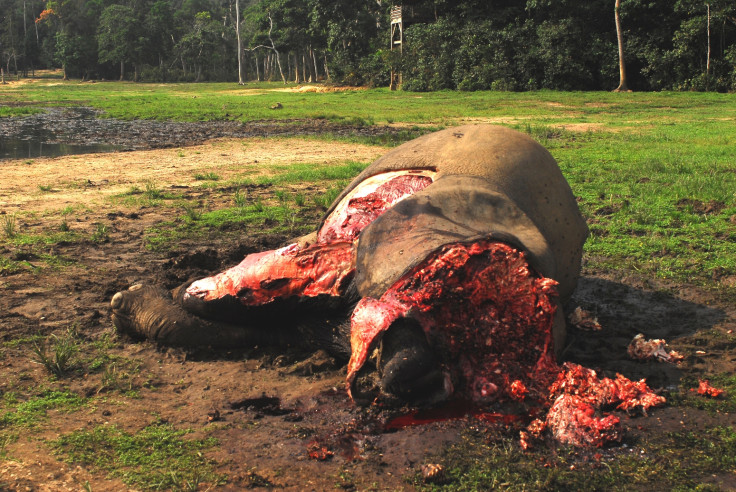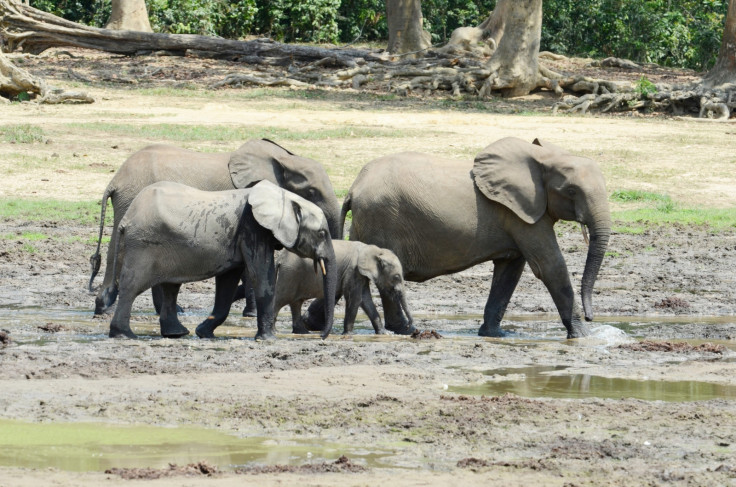After years of poaching, Africa's forest elephant population will take nearly a century to recover
Numbers of the animal have declined 65% between 2002 and 2013.

It will take almost a century for forest elephant numbers to recover from the intense poaching they have suffered since 2002, according to findings from the first ever study of forest elephant demography, published in the Journal of Applied Ecology.
The animals are one of the slowest reproducing mammals in the world. It takes more than 20 years for females to begin reproducing and they can only give birth once every five to six years.
Forest elephants are one of two species of African elephant, the other being savanna elephants. Forest elephants have suffered devastating poaching in recent years, causing a decline in numbers of 65% between 2002 and 2013, according to the Wildlife Conservation Society (WCS) who led the study.
Because of their low birth rates, the researchers think it will take at least 90 years for these losses to be recovered. The team used decades of monitoring data from an area in the Central African Republic, known as Dzanga Bai – roughly translated as "village of the elephants".
"This work provides another critical piece of understanding regarding the dire conservation status of forest elephants," said the lead author of the study Andrea Turkalo, WCS Associate Conservation Scientist, who collected the detailed data on the Dzanga elephants over several decades, despite tough logistical challenges and political instability.
From the data, the team found that forest elephants begin breeding later and have longer calving intervals than other elephants, meaning the population will take longer to increase.
"Female forest elephants in the Dzanga population typically breed for the first time after 23 years of age, a markedly late age of maturity relative to other mammals," Turkalo said. "In contrast, Savanna elephants typically begin breeding at age 12. In addition, breeding female forest elephants only produced a calf once every five or six years, relative to the three- to four-year interval found for Savanna elephants."

The authors of the study suggest the low birth rate could be down to the challenges of living in a tropical forest where new plant growth is limited to the canopy.
Peter Wrege, a behavioural ecologist at the Cornell Lab of Ornithology's Elephant Listening Project said: "While we think of tropical forests as incredibly productive areas, most production occurs in the high canopy inaccessible to ground-dwelling species. In addition, vegetation in tropical systems are laden with compounds to defend their leaves from herbivores, including elephants. This means accessing resources is challenging for terrestrial fauna."
George Wittemyer, chair of the Scientific Board of Save the Elephants and a professor in Wildlife Conservation at Colorado State University, noted the importance of the study in assessing the status of forest elephants and projecting population decline in the face of poaching.
"Legislation regarding ivory trade must consider the collateral effects on forest elephants and the difficulties of protecting them," Wittemyer said. "Trade in ivory in one nation can influence the pressures on elephants in other nations."
The study suggests that forest elephants are particularly susceptible to poaching, which will give vital ammunition to conservationists in the battle to close domestic ivory markets – a topic which will be debated at the IUCN''s (International Union for Conservation of Nature) World Conservation Congress, taking place between September 1-10 in Hawaii, and the Convention on International Trade in Endangered Species, which begins later in September in Johannesburg.
"Only by understanding the basic biology of forest elephants and other species, can we properly determine the level of threats they face from human activities," said Wittemyer.
Though the decline of forest elephant numbers is a tragedy in itself, the animals also play a crucial role in the local ecosystem. Many trees, for example, rely on them to disperse their seeds, meaning that a continued decline in elephant numbers and range would likely cause significant changes to these ecosystems, potentially damaging forests which are important for absorbing greenhouse gases.
© Copyright IBTimes 2024. All rights reserved.






















